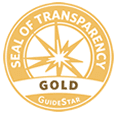On good days, chronic pain can act as a massive hindrance to living your life. Even simple things like cleaning the house or running errands can almost become unbearable. So it’s no surprise that exercising is the furthest thing from many people’s minds when managing their chronic pain. If stressing your injured body part makes it worse, why would you volunteer to do it 3+ times a week?
But ask any chronic pain expert, whether they’re an academic researcher or physical therapist, and they’ll tell you that many people with mild-to-moderate chronic pain see significant improvements from regular exercise. So how do you keep working out from exacerbating your symptoms? One of the keys is finding low-impact workouts, aka physical activities that don’t put a lot of undue shock and strain on your body.
For Veterans who trained up on 3-mile PT runs just about every day, this can be a bit of a mental adjustment. But put that discipline to use, and you may find your chronic pain becomes much more manageable. To get you started, here are a few low-impact exercise options you can give a try. We’ve talked at length about the benefits of low-impact exercise in a previous post; let’s jump straight into the recommendations.
As with all things related to your healthcare, we recommend running your plans by your primary care doctor or a physical therapy expert first to ensure it’s a good fit for your specific injuries.
Weight Lifting
We’re starting with weights because they’re a great example of how “low impact” doesn’t mean “wimpy.” If you start with low increments to find your early limits and slowly build up, even people with severe chronic pain can build incredible strength and endurance. In addition to the natural endorphin rush, which can naturally block the pain signals going to your brain, building muscle can often physically counteract many of its common sources. As an example, if your chronic pain is tied to an injured joint, strengthening the surrounding muscle can alleviate a lot of the strain and stress it experiences throughout the day.
If weight lifting was a staple of your training routine during enlistment, reset your expectations on where you’re starting today. Even if you can complete the same reps you used to, your injury might make you pay for it later. If lifting was never your thing, call up a buddy to make sure you’re observing good technique, or consider a few sessions with a trainer. Either way, don’t let self-consciousness about walking into a gym stop you from trying it; you can put together a respectable set of weights for home use for a hundred dollars or less on Facebook Marketplace.
Walking
For many Veterans, just being on their feet too long can set off their injuries, so walking to exercise may seem counterintuitive at first. However, just like building muscle, pushing yourself to a safe limit a few times a week can dramatically extend where that limit lies. Walking also offers many of the same health benefits as running, including increased muscle strength and a healthier heart. Plus, a little time away from your daily distractions can be a great way to clear your head and reduce stress. For many chronic pain patients, especially Veterans, sticking with a walking routine can be extremely tedious at the beginning, even painful. As long as a medical expert has signed off on it, you will find yourself being able to go a little further every day you stick it out.
Swimming
Whether it’s doing a couple of laps, water aerobics, or simply walking around waist-deep in a pool, swimming is one of the ultimate low-impact exercises. In addition to your buoyancy taking a lot of weight and pressure off your injuries naturally, many people find the coolness and soft resistance of the water to be very soothing. Just be sure to do a short test run if it’s your first time in an unfamiliar pool; if the water is too cold, it could potentially tense up your muscles and make the pain worse instead of better. Although participating in a class or a structured workout routine will give you the best results in terms of increased strength and range of motion, moving around in the water for 20-30 minutes a day can be of benefit.
Cycling
If you are fortunate to live riding or driving distance of a paved trail, biking is an unbelievably great way to build strength and stamina in nearly every part of your body. Just like weights, it seems like someone is selling or giving away a bike just about every day. However, sitting with your body weight on your arms may be too painful, depending on your injuries. If this is the case, take a look at a recumbent bike, which will allow you to cycle in a reclined position.
Even more so than walking, we recommend erring on the side of caution when it comes to the distance of your first few rides. No one wants to wait for an Uber driver who happens to have a bike rack. If you’re significantly worried about this problem or the cost of a reliable bike, many gyms have stationery options for both styles, which will provide you with all of the same health benefits.
Yoga
If your first reaction was to laugh, hear us out. Yoga isn’t just for rich health nuts who live off acai berries and somehow have time to work out at 10 in the morning. Our team at Operation Red Wings Foundation has been deploying it as part of our Post-Traumatic Growth programs since the beginning, with excellent feedback and success from our participants. In fact, so many Veterans across the country have seen incredible results that it’s being studied and recommended for treating combat trauma.
The amazing thing about yoga is how well it caters to recovering from injuries, both physical and mental. In addition to the pain relief from increased flexibility and range of motion, it takes a surprising amount of strength to hold many more advanced poses. You probably won’t get shredded just from doing chair poses, but you will build muscle. Because yoga is all about personal growth and progress, any good instructor will offer modifications that will let you improve at your own pace on your terms.





